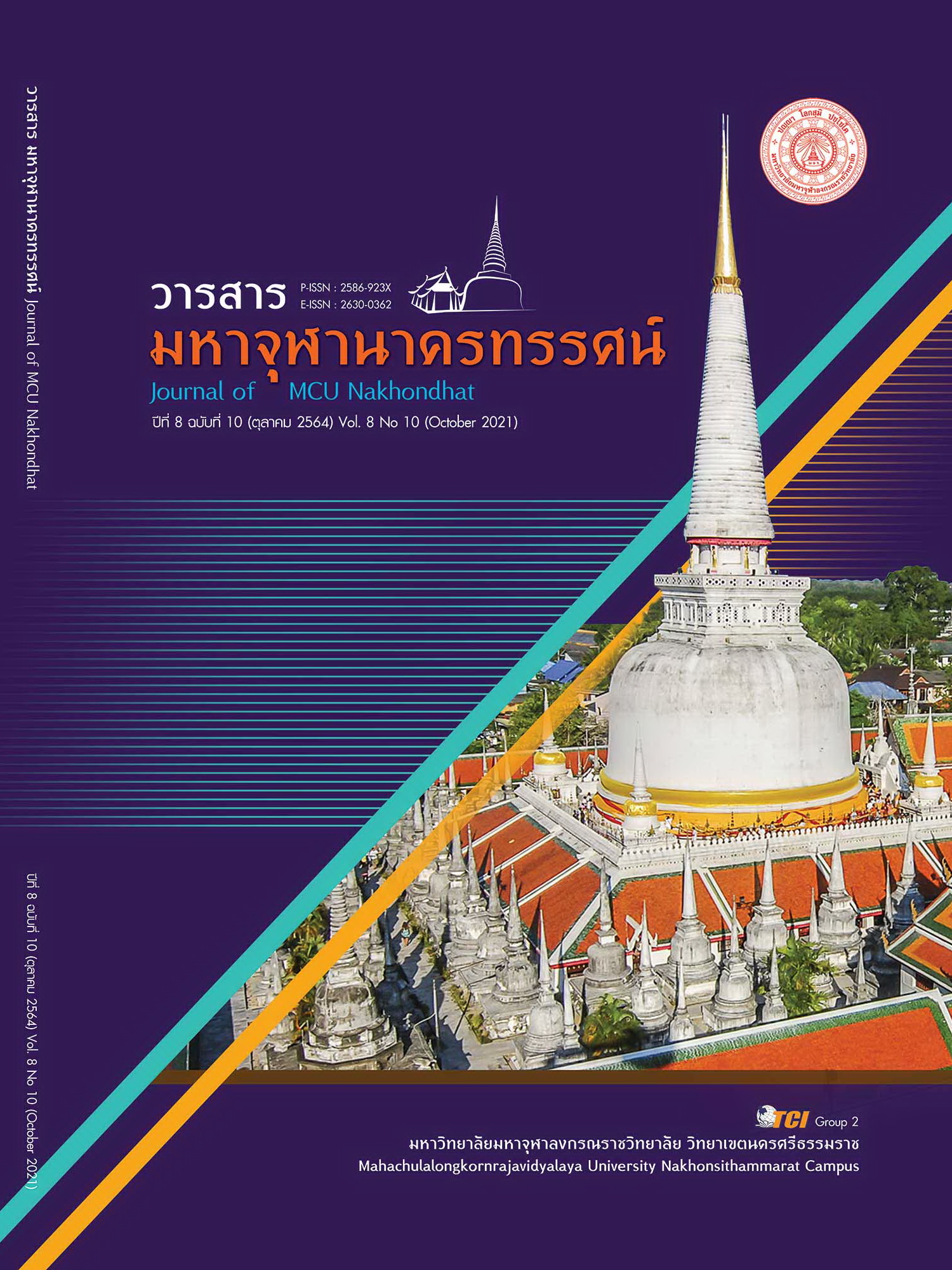FACTORS AFFECTING SOCIAL MEDIA ADDICTION OF UNDERGRADUATE STUDENTS IN THE EASTERN REGION UNIVERSITY
Main Article Content
Abstract
The objectives of this research were to 1) measure the level of online social media addiction, and 2) explore the factors affecting online social media addiction of undergraduate students in the eastern region of Thailand. This research is quantitative research. The sample group, which was selected from simple random sampling method, consisted of 375 undergraduate students from 5 universities located in the eastern region of Thailand. The research instrument was the 5-level gauge questionnaire. Data were analyzed using descriptive statistics with statistical values, numbers, percentage, mean and standard deviation. The hypothesis testing was analyzed by examining the structural validity of the causal relationship model. The results showed that 1) The overall level of online social media addictive behavior of the undergraduate students in the eastern region of Thailand was ranked in addictive level, and 2) the variables affecting online social media addiction included subjective norm, perceived behavioral control of use, perceived enjoyment, attitude, and intention. From the analysis, it was found that the causal model was well-consistent with the empirical data. The chi-square (c2) was equivalent to 69.27 at the degrees of freedom (df) = 26. The relative chi-square (c2/df) was equivalent to 2.66. The goodness of fit index (GFI) was equivalent to .96. The adjusted goodness of fit index (AGFI) was equivalent to .92. The comparative fit index (CFI) was equivalent to .97. The standardized root mean residual (SRMR) was equivalent to .06. The root mean square error of approximation (RMSEA) was equivalent to .06, and all variables in the model were able to describe working effectiveness at 39 percent.
Article Details
References
ชไมพร กาญจนกิจสกุล. (2555). ระเบียบวิธีวิจัยทางสังคมศาสตร์. ตาก: บริษัทโพรเจ็คท์ ไฟฟ์-โฟว์ จำกัด.
นุชรีรัตน์ ขวัญคำ. (2550). รูปแบบการใช้สื่ออินเตอร์เน็ตของกลุ่มวัยรุ่นในเขตกรุงเทพมหานคร : ศึกษาลักษณะทางประชากรที่มีความสัมพันธ์กับลักษณะการใช้สื่ออินเตอร์เน็ตและพฤติกรรมการใช้ สื่ออินเตอร์เน็ตเพื่อตอบสนองความต้องการรวมถึงศึกษารูปแบบ
การใช้สื่อของกลุ่มวัยรุ่น. ใน วิทยานิพนธ์นิเทศศาสตรมหาบัณฑิต สาขานิเทศศาสตรสารสนเทศ. มหาวิทยาลัยธุรกิจบัณฑิตย์.
บงกช นักเสียง และคณะ. (2563). การติดสื่อสังคมออนไลน์ บุคลิกภาพห้าองค์ประกบอกับความเครียดของนิสิตมหาวิทยาลัยบูรพา. วารสารการสื่อสาร มหาวิทยาลัยราชภัฏเชียงราย, 3(2), 43-64.
ภาณุวัฒน์ กองราช. (2554). การศึกษาพฤติกรรมการใช้เครือข่ายสังคมออนไลน์ของวัยรุ่นประเทศไทย : กรณีศึกษา Facebook. ใน วิทยานิพนธ์วิทยาศาสตรมหาบัณฑิต, สาขาการบริหารเทคโนโลยี. มหาวิทยาลัยธรรมศาสตร์.
วรรณี แกมเกตุ. (2551). วิธีวิทยาการวิจัยทางพฤติกรรมศาสตร์ (พิมพ์ครั้งที่ 2). กรุงเทพมหานคร: โรงพิมพ์แห่งจุฬาลงกรณ์มหาวิทยาลัย.
สำนักงานพัฒนาธุรกรรมทางอิเล็กทรอนิกส์. (2563). รายงานผลการสำรวจพฤติกรรมผู้ใช้อินเทอร์เน็ตในประเทศไทย ปี 2563. กรุงเทพมหานคร: กระทรวงดิจิทัลเพื่อเศรษฐกิจและสังคม.
เสรี ชัดแช้ม. (2547). การวิเคราะห์องค์ประกอบเชิงยืนยัน. วารสารวิจัยและวัดผลการศึกษา มหาวิทยาลัยบูรพา, 2(1), 15-42.
Ajzen.I. (1991). The Theory of Planned Behavior. Organization Behavior and Human Decision Processes, 50, 179-211.
Hair, J. F. et al. (2010). Multivariate Data Analysis. (7th ed). Upper Saddle River, New Jersey: Prentice Hall.


